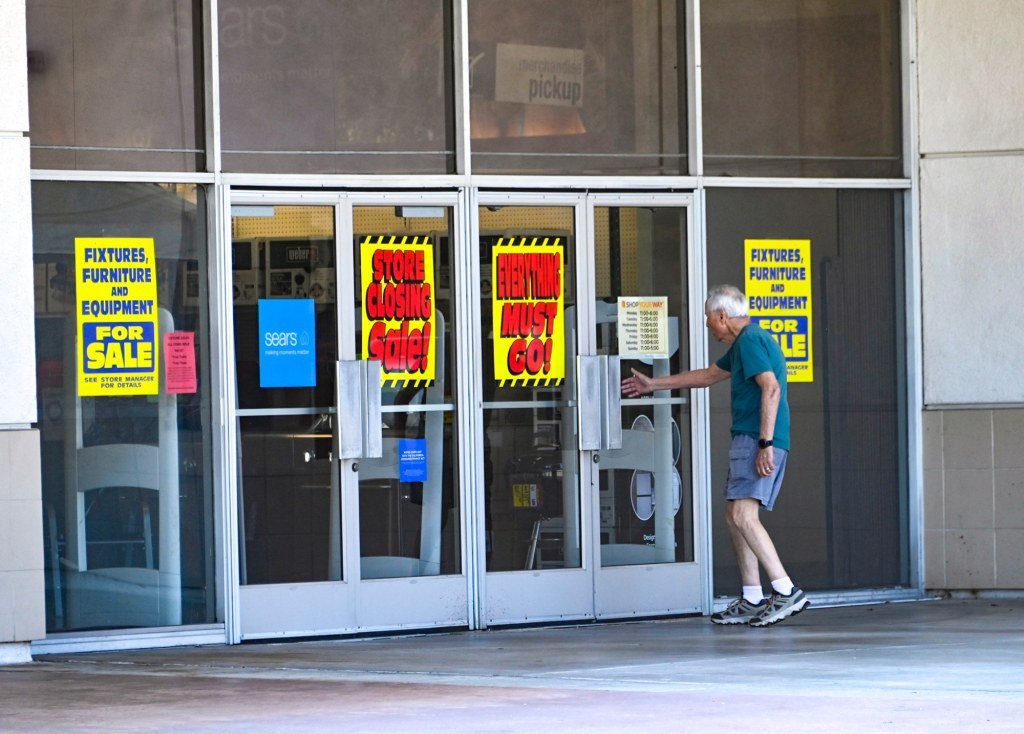Sears: The Fall of a Retail Giant
As shoppers drifted through the dimly lit aisles of the Whittwood Town Center in Whittier, California, the air was thick with nostalgia and discount signs. Just a few years ago, this three-story Sears was a buzzing hub of activity, but now it stands teetering on the brink of extinction. With its impending closure, it will soon join the ranks of former retail titans, leaving only eight stores operational across the United States.
Ron Torsy, a 65-year-old shopper, recalled fond memories of spending weekends at Sears in El Monte. “It’s hard to see it go,” he said, scrutinizing a GE washing machine marked down from $525 to a mere $300. “But you can’t ignore the elephant in the room—Amazon.” As he spoke, a team of employees began packing up merchandise, an emblematic scene of a brand once synonymous with American retail.
A Retail Relic in a Changing Landscape
Sears has long been a beacon of consumer confidence, tracing its roots back to 1893 as a mail-order watch business. At its pinnacle, the retailer boasted nearly 3,500 stores nationwide. But as Torsy’s remark hinted, seismic shifts in consumer behavior—primarily driven by the rise of e-commerce giants like Amazon—have led to its unraveling.
“We’re witnessing a significant transition in consumer shopping habits,” noted Dr. Emily Hargrove, an expert in retail economics at the University of California, Irvine. “The efficiency and convenience of online shopping have redefined customer expectations, rendering traditional department stores less relevant.” Coresight Research estimates that over 15,000 retail store closures are expected this year, reflecting a grim reality for many legacy retailers like Sears.
The End of an Era
Empty racks and hollow echoes filled the once-bustling store as only one customer wandered the aisles on a recent Tuesday afternoon at the Burbank location, the last of its kind in Southern California. “It just feels sad,” said a store manager who wished to remain anonymous. “People are memories, and we have lost a lot of that.”
- Primary factors contributing to Sears’ decline:
- Influence of e-commerce platforms
- Increased competition from discount retailers
- Failure to adapt to consumer preferences
- Financial mismanagement leading to bankruptcy
Many experts argue that the downfall of Sears serves as a cautionary tale in the ever-evolving retail landscape. Neil Saunders, managing director of GlobalData, echoed similar sentiments: “Sears was once a mass merchandiser, a title now held by more agile retailers like Target and Walmart. It’s hard to regain momentum when you’ve lost the critical mass needed to compete.”
Catalyst for Change
The closure of the Whittwood location is more than merely a retail loss; it marks a turning point for urban development in Whittier. Kimco Realty Corp., which manages the shopping center, has announced plans to transform the site into a residential complex featuring 1,200 housing units and a transit hub. “Our strategy aims to meet the growing need for urban living spaces,” said Ben Pongelli, the city’s community development director. “Sears’ departure could accelerate the redevelopment process and shape the future of this community.”
Residents like Antia Ortiz express excitement about the transformation. “Change is good. We need restaurants, cafes, and places for families to gather,” she shared, wholly embracing the shift in their neighborhood. Yet, not everyone shares this perspective; many lament the end of a brand that once thrived locally.
The Retail Apocalypse
The term “retail apocalypse” has gained traction in media discourse, but it has become a reality that is felt most acutely in local shopping centers. Data shows that retailers are closing stores at an alarming rate, with vacancy rates stabilizing at around 4.1%, a figure still striking less than a decade post-recession.
With the landscape rapidly shifting, Southern California has seen new entrants in the market. Companies like T&T Supermarket and Panda Mart are stepping in to occupy spaces formerly held by retail giants, showcasing a further evolution in what customers seek. According to a report from JLL, “Retailers who fail to adapt are finding themselves replaced by flexible concepts that cater to rapidly changing consumer demands.”
The Legacy of Sears
Amid whispers of a fading legacy, the specter of Sears’ glorious past looms large. Its mail-order catalogs, once a staple for American families, paved the way for accessible consumerism. But as they prepare to close yet another chapter in their storied history, experts argue that the demise of Sears may ultimately pave the way for a dynamic retail environment where only the most adaptable will survive.
“Retail is not dead; it’s evolving,” Dr. Hargrove concluded. “The question is whether companies can adapt swiftly to meet new consumer needs.” As Sears exits the physical stage, the competition for relevance in the retail space intensifies, leaving little room for nostalgia as new generations seek modern solutions.
As the store’s lights dim and the shelves echo with empty promises of discount sales, we are reminded that change is not just inevitable; it is essential. The fabric of retail will continue to unravel and weave anew, shaped by consumer demands and technological advancements. After all, in a world that spins faster than ever, holding onto the past seems a futile endeavor.









